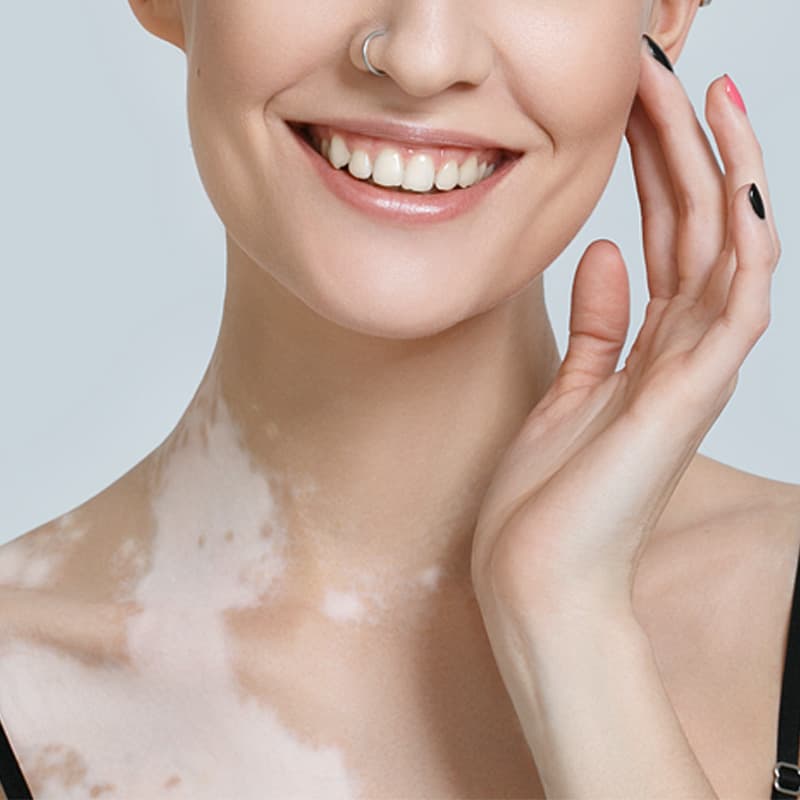Vitiligo
What Is Vitiligo?
Vitiligo is an autoimmune skin condition caused by an inappropriate immune response to melanocytes, which are the cells that provide color to our skin. The immune attack of the melanocyte leads to well-defined depigmented, or white, patches of skin. While more striking in people with a darker natural skin color, the condition actually equally affects people of all skin types. Vitiligo can be categorized into focal (localized), segmental, or generalized disease; with generalized being the most common subtype. The condition often starts insidiously and follows an unpredictable course. In fact, while one patient may have just a few patches or non-progressive disease, the next may have widespread or rapidly changing disease. Vitiligo is generally asymptomatic, but the psychological impact on patients is typically quite significant. This is especially true because the most commonly affected areas include the face, hands, chest, armpits, and groin.
We Treat Vitiligo
Depending on the type and severity of the disease, treatment options for vitiligo include topical or systemic steroids, topical calcineurin inhibitors, light therapy such as narrow band ultraviolet light (NBUVB), or immune-suppressing medications. While there is no cure for vitiligo, with these treatments patients are often able to regain some of the lost pigment. Occasionally there can be other associated autoimmune or endocrine diseases in association with vitiligo, so evaluation and discussion of your vitiligo with a board-certified dermatologist will lead to the best outcomes. Dr. Ortleb has a Daavlin narrow band UVB (NBUVB) unit and can treat your vitiligo in the office if she determines it is a treatment option for you.
Call 402-505-8777 for evaluation of your vitiligo today!





